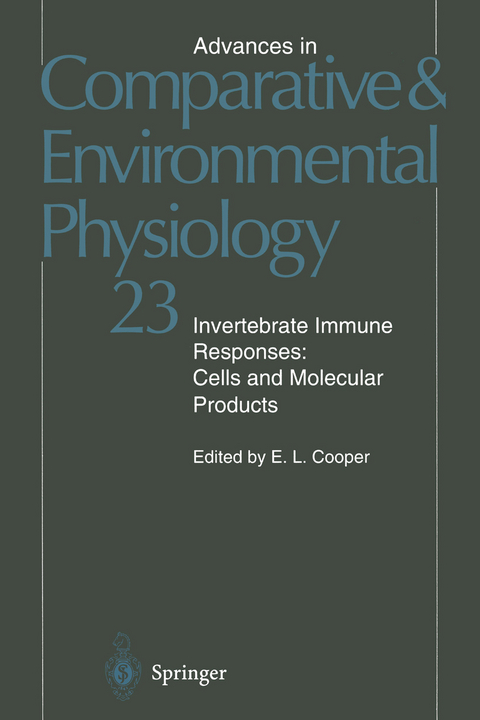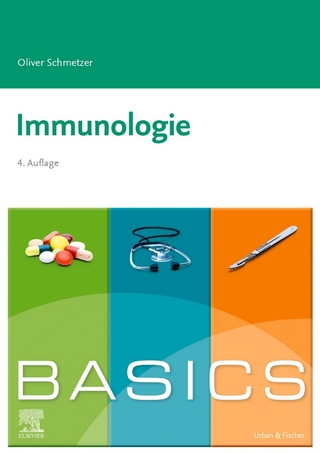
Invertebrate Immune Responses
Cells and Molecular Products
Seiten
2011
|
1. Softcover reprint of the original 1st ed. 1996
Springer Berlin (Verlag)
978-3-642-79695-1 (ISBN)
Springer Berlin (Verlag)
978-3-642-79695-1 (ISBN)
E. L. Cooper The Immunodefense System Because invertebrates are exceedingly diverse and numerous, estimates reveal nearly 2 million species classified in more than 20 phyla from unicellular organisms up to the complex, multicellular protostomes and deuterostomes. It is not surprising to find less diverse defense/immune responses whose effector mechanisms remain to be completely elucidated. Of course, I am not advocating that the few of us devoted to analyzing invertebrate immunity attempt the Herculean task of examining all these species to uncover some kind of unique response! As these two volumes will reveal, we are doing fairly well in examining in depth only the most miniscule examples of invertebrates, some of which have great effects on human populations such as edible crustaceans or insect pests. This is in striking contrast to the mass of information on the mammalian immune response which has been derived essentially from the mouse, a member of one phylum, Vertebrata, an approach, reductionist to be sure, but one that has served well both the technological and conceptual advances of immunology as a disci pline. The essential framework of immunology, the overwhelming burst of results since the 1960s, have emanated primarily from this single animal. We should not forget the thymus and the bird's bursa of Fabricius, without which we might have been slower to recognize the bipartite T /B system.
Cells: The Basic Immunodefense Armentarium.- 1 The Immunocytes of Protostomes and Deuterostomes as Revealed by LM, EM and Other Methods.- 2 Mechanisms of Antigen Processing in Invertebrates: Are There Receptors?.- Cell Products: Natural and Induced as Revealed by Non-specific and Specific Responses Following Antigenic Challenge.- 3 The Prophenoloxidase Activating System: A Common Defence Pathway for Deuterostomes and Protostomes?.- 4 A Definition of Cytolytic Responses in Invertebrates.- 5 The Immunoglobulin Superfamily: Where Do Invertebrates Fit In?.- 6 Insect Hemolymph Proteins from the Ig Superfamily.- 7 The Interface Between Invertebrates and Vertebrates: Complement vs Ig.
| Erscheint lt. Verlag | 14.12.2011 |
|---|---|
| Reihe/Serie | Advances in Comparative and Environmental Physiology |
| Mitarbeit |
Assistent: M. Bilej, E.L. Cooper, K. Hashimoto, M.R. Kanost, Y. Kurosawa, R.L. Raison, P. Roch, T. Sawada, V.J. Smith, S. Tomonaga, L. Tuckova, L. Zhao Gast Herausgeber: Edwin L. Cooper |
| Zusatzinfo | XV, 216 p. 20 illus. |
| Verlagsort | Berlin |
| Sprache | englisch |
| Maße | 155 x 235 mm |
| Gewicht | 364 g |
| Themenwelt | Studium ► Querschnittsbereiche ► Infektiologie / Immunologie |
| Naturwissenschaften ► Biologie ► Zellbiologie | |
| Schlagworte | Antibody • Antigen • Cell • Cytotoxicity • Evolution • immune response • immune system • immunity • Immunoglobulin • Immunologie • immunology • Insects • Invertebrates • Membrane • Microorganism • proteins • resistance • Wirbellose |
| ISBN-10 | 3-642-79695-8 / 3642796958 |
| ISBN-13 | 978-3-642-79695-1 / 9783642796951 |
| Zustand | Neuware |
| Haben Sie eine Frage zum Produkt? |
Mehr entdecken
aus dem Bereich
aus dem Bereich
Buch | Softcover (2023)
Lehmanns Media (Verlag)
19,95 €


